The automotive world is rapidly shifting towards electrification, and while fully electric vehicles are gaining traction, hybrid SUVs offer a practical stepping stone for many. These gas-electric vehicles provide significant fuel savings without the need for charging infrastructure, relying on regenerative braking and efficient engine management. Advancements in hybrid technology, particularly in transmission and computer control, have made them even more appealing.
For those who seek to reduce their carbon footprint and fuel costs but aren’t ready to commit to a fully electric vehicle or lack convenient charging options, hybrid SUVs are an excellent choice. Perfect for city driving and beyond, these versatile vehicles blend the practicality of an SUV with the efficiency of a hybrid powertrain. Let’s explore some of the top contenders in the compact hybrid SUV segment.
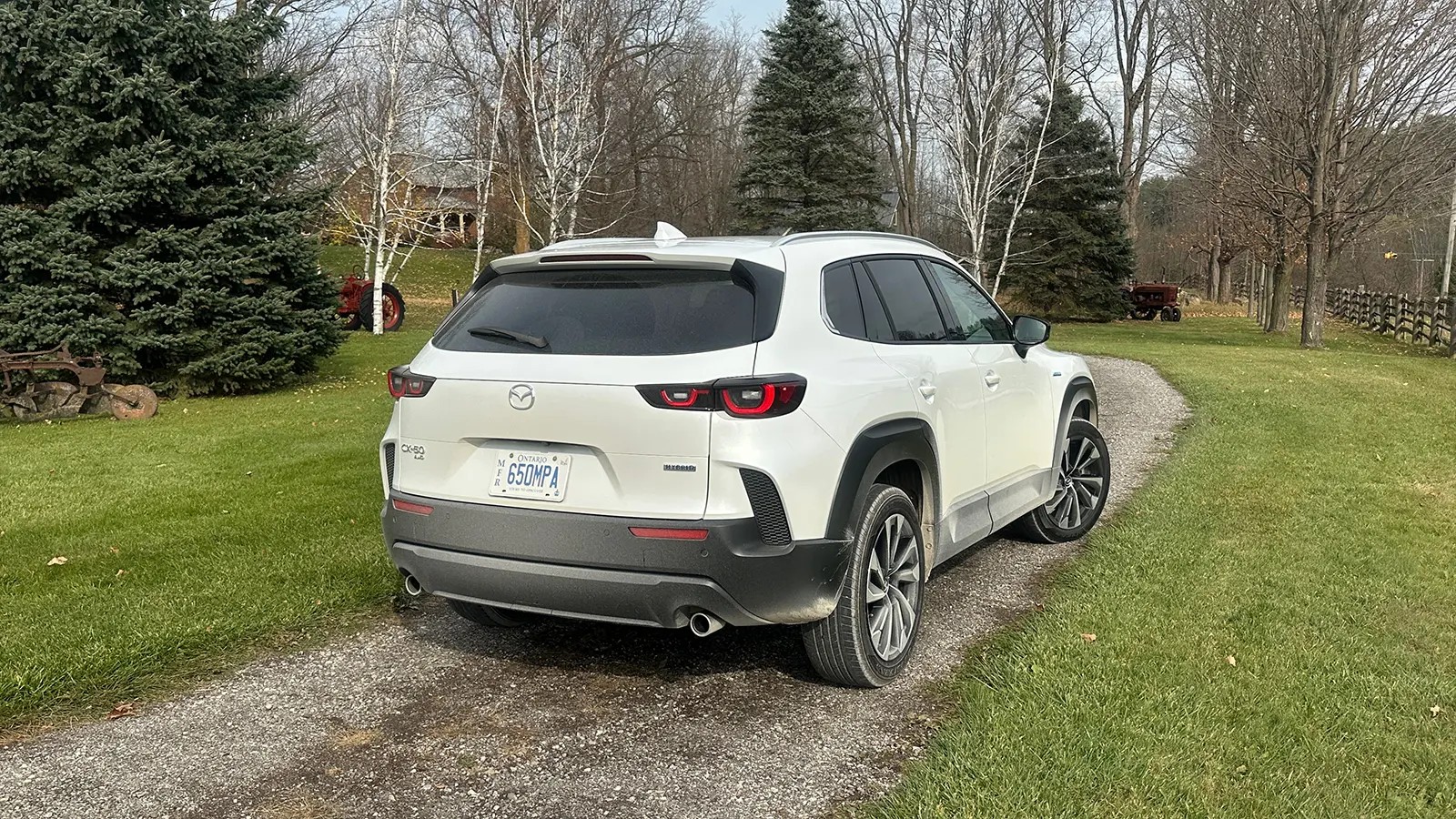 White Mazda CX-50 Hybrid on a scenic road
White Mazda CX-50 Hybrid on a scenic road
Mazda CX-50 Hybrid: Efficiency Meets Refinement
The Mazda CX-50 has already carved a niche with its rugged styling, and the 2025 CX-50 Hybrid elevates its appeal by integrating Toyota’s renowned hybrid technology. This all-new variant combines Mazda’s distinctive design with the proven efficiency of a gas-electric powertrain. Sharing components with the Toyota RAV4 Hybrid, the CX-50 Hybrid delivers 219 horsepower and 163 lb-ft of torque from its 2.5-liter inline-four engine. It utilizes a continuously variable transmission (CVT) and an electric all-wheel-drive system powered by three electric motors.
While the standard gasoline CX-50 and the more powerful CX-50 Turbo emphasize performance, the CX-50 Hybrid prioritizes fuel efficiency. It stands in contrast to the Hyundai Tucson Hybrid, which offers a sportier N-Line version alongside its efficient models. The CX-50 Hybrid achieves a combined fuel economy of 38 mpg, slightly less than the RAV4 Hybrid’s 39 mpg.
Integrating the Toyota Hybrid System (THS) into the Mazda CX-50 involved significant engineering, along with subtle styling updates. The CX-50 Hybrid features extended body cladding and a slightly taller roof to maintain a 7.6-inch ground clearance, even with the battery pack positioned under the rear seats. Although longer than many rivals, the CX-50 Hybrid offers 29.2 cubic feet of cargo space, a minor reduction compared to other CX-50 models and less than the RAV4 and Tucson Hybrids.
The CX-50 Hybrid truly shines in its interior. Mazda has created a subtly luxurious cabin, especially in higher trim levels, with a focus on refined materials and features. The Premium Plus trim, for instance, boasts two-tone leather seats with detailed stitching, echoed throughout the doors and dashboard. A rotary controller, a feature often found in luxury vehicles, minimizes fingerprints on the touchscreen, complemented by convenient steering wheel controls. Additional buttons near the steering column offer quick access to memory seat settings, a front-view camera, and parking sensor deactivation.
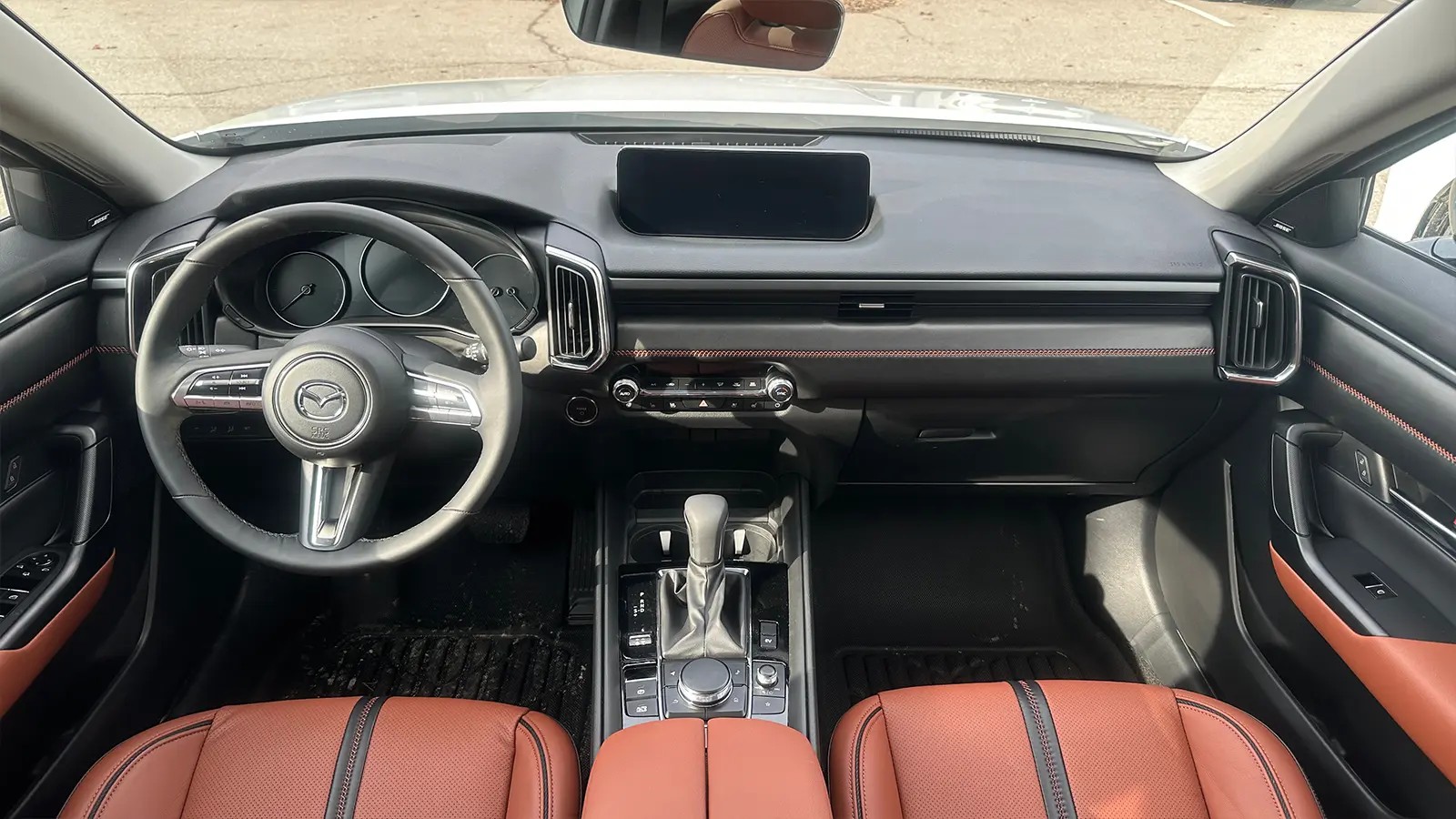 Mazda CX-50 Hybrid interior with leather seats and rotary controller
Mazda CX-50 Hybrid interior with leather seats and rotary controller
Despite its modern features like a panoramic sunroof, the CX-50 Hybrid retains a touch of classic Mazda appeal with largely analog gauges and a more understated infotainment screen. The driving experience is also more refined, with a quieter and more composed ride than many Toyota hybrids. The CX-50 Hybrid offers a blend of fuel efficiency and a near-luxury feel, distinct from the sportier, turbocharged CX-50 variants.
Priced between $34,000 and $40,000, the CX-50 Hybrid positions itself above the standard gas models but below the Turbo versions. It occupies a middle ground in the lineup, offering a different approach compared to the Hyundai Tucson, which provides a broader spectrum of hybrid options, from economical to sporty.
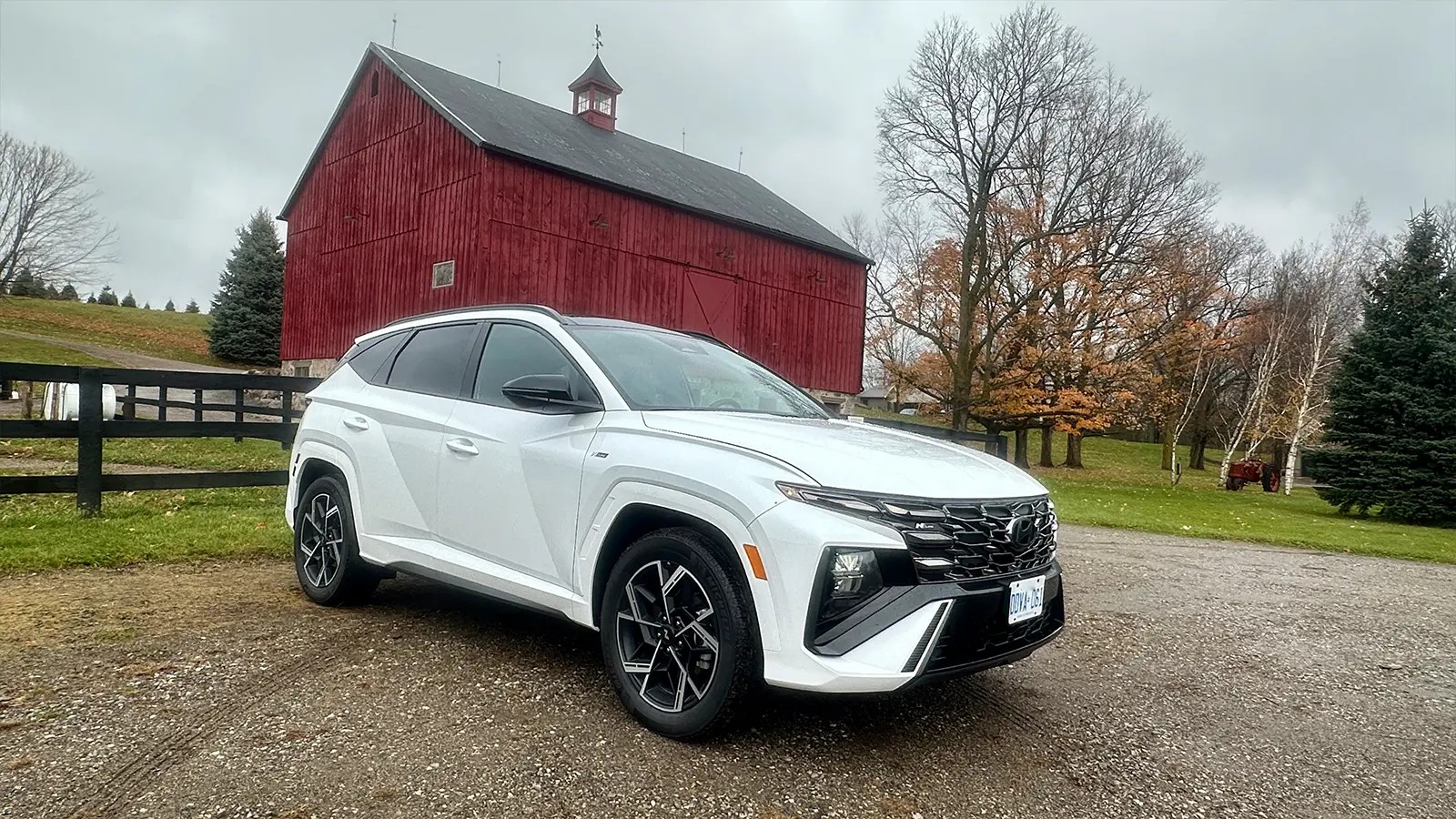 Hyundai Tucson Hybrid in white showcasing its modern design
Hyundai Tucson Hybrid in white showcasing its modern design
Hyundai Tucson Hybrid: Versatility with Efficiency and Sportiness
Hyundai takes a comprehensive approach to its popular Tucson model, offering gas-only, hybrid, plug-in hybrid, and sporty N-Line trims. The Tucson Hybrid caters to a wide range of preferences, from maximum fuel economy to a more engaging driving experience. The plug-in hybrid (PHEV) variant is ideal for those seeking electric driving for daily commutes, with an EPA-estimated 33 miles of all-electric range, while retaining the flexibility of a gasoline engine for longer journeys.
The Tucson Hybrid N Line model stands out with its sporty aesthetics, including unique 19-inch wheels, black mirror caps, and dual exhaust outlets. For 2025, all Tucson models receive refreshed front-end styling, updated LED lighting, and new wheel designs. The Tucson’s design language features sharper lines, differentiating it from competitors with more rounded silhouettes.
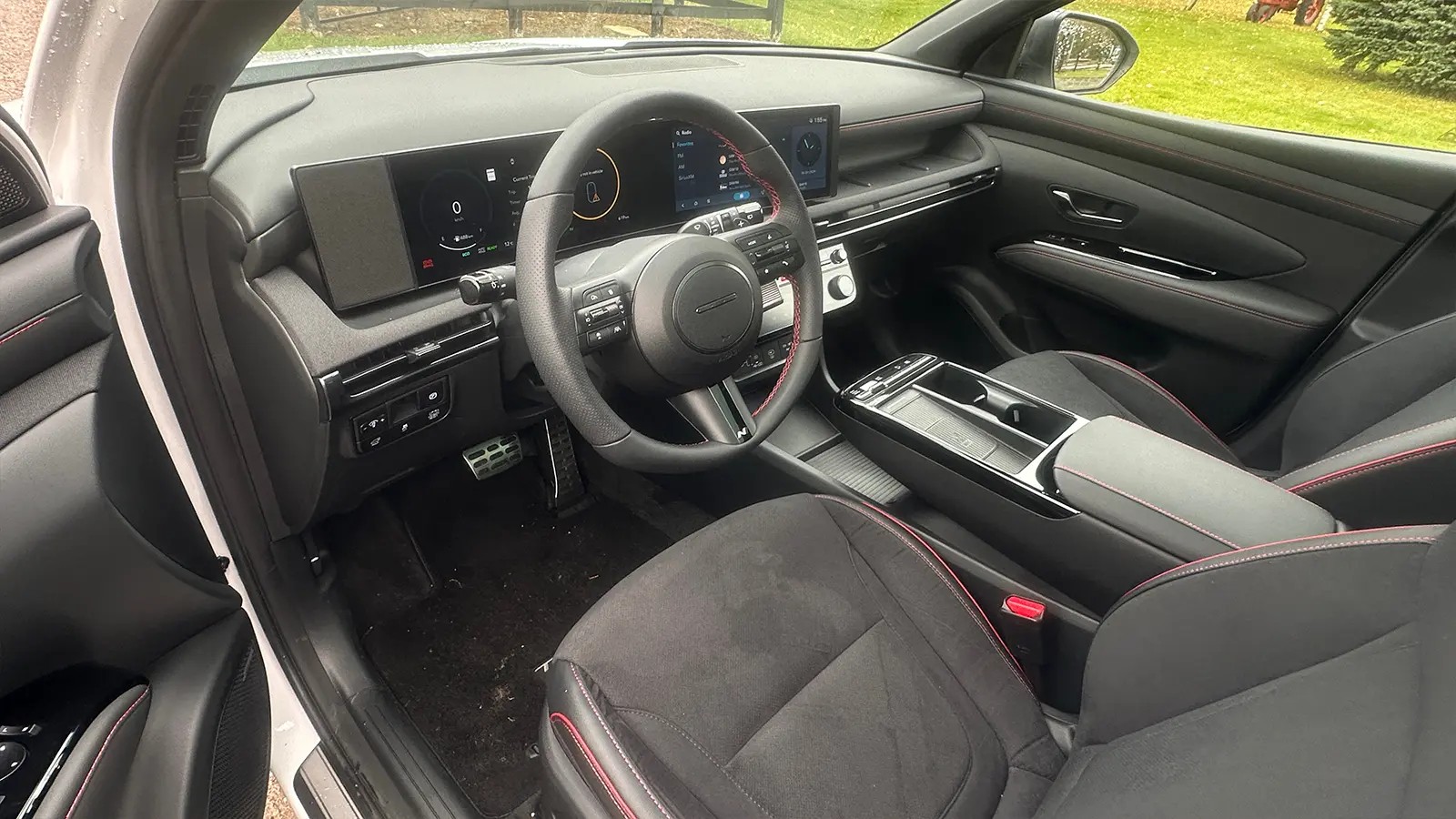 Hyundai Tucson Hybrid interior with digital screens and red accents
Hyundai Tucson Hybrid interior with digital screens and red accents
Inside, the Tucson Hybrid N Line boasts a modern, all-digital dual-screen display, replacing traditional gauges. Red stitching accents on the seats, doors, armrest, and steering wheel, along with sporty pedals and an N-branded steering wheel, emphasize its performance-oriented nature.
The Tucson Hybrid N Line delivers a compelling blend of performance and efficiency. Its 1.6-liter turbocharged engine, combined with the hybrid system, produces 231 horsepower and 258 lb-ft of torque when using premium fuel, though it can run on regular gasoline. Paddle shifters and a six-speed automatic transmission provide more driver engagement compared to the CVTs found in some competitors.
While not the most fuel-efficient in the compact hybrid SUV class, the Tucson Hybrid N Line achieves a respectable 35 mpg combined, offering a good balance of power and economy. The powertrain feels more refined and responsive, delivering a more engaging driving experience. Despite its sporty character, the N Line trim maintains a comfortable ride, similar to the Tucson XRT, and includes features like “Baby Mode,” which softens acceleration for passenger comfort.
The Tucson Hybrid also excels in practicality, offering more rear-seat room and cargo space than the Mazda CX-50 Hybrid, and significantly more space than the smaller Lexus UX. The Hyundai Tucson Hybrid N Line presents a well-rounded package, blending sporty appeal, family-friendly practicality, and efficient hybrid technology.
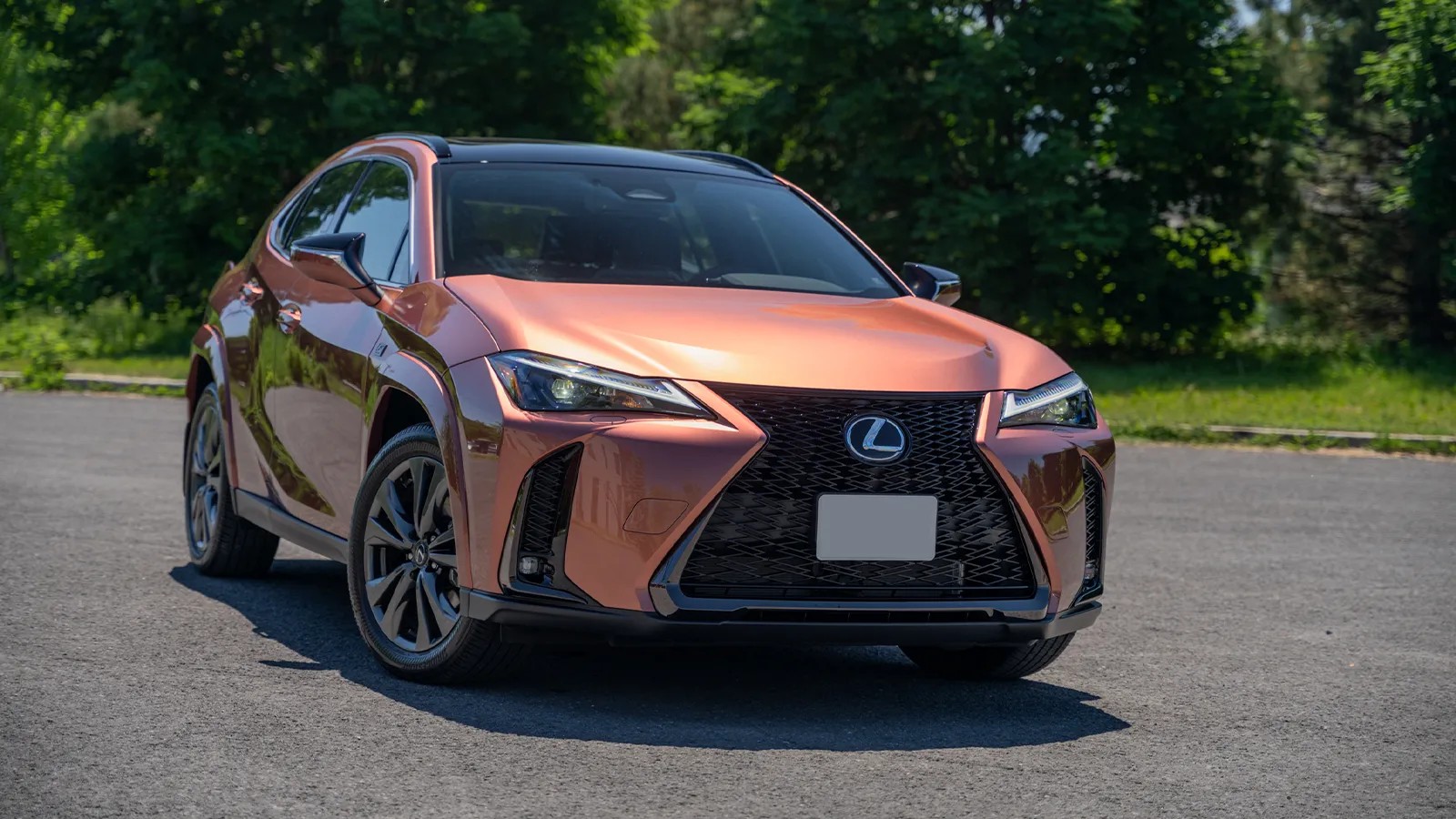 Orange Lexus UX 300h showcasing its compact size and design
Orange Lexus UX 300h showcasing its compact size and design
Lexus UX 300h: Compact Luxury with Urban Agility
The Lexus UX 300h, formerly known as the UX 250h, receives updates for the 2025 model year, offering a compact luxury hybrid option. While positioned in the same price range as mainstream compact SUVs, the UX 300h feels smaller and less powerful than competitors like the Mazda and Hyundai. It is arguably closer to a subcompact crossover or hatchback in size, officially categorized as a compact car by fueleconomy.gov, while its rivals are classified as small SUVs.
The UX 300h’s smaller footprint can be advantageous in urban environments, offering enhanced maneuverability and easier parking. Its design is arguably attractive, particularly in the F Sport trim, which adds unique wheels, a distinctive grille, a black roof, and roof rails for a sportier appearance. However, the large Lexus grille on its smaller body might not appeal to everyone.
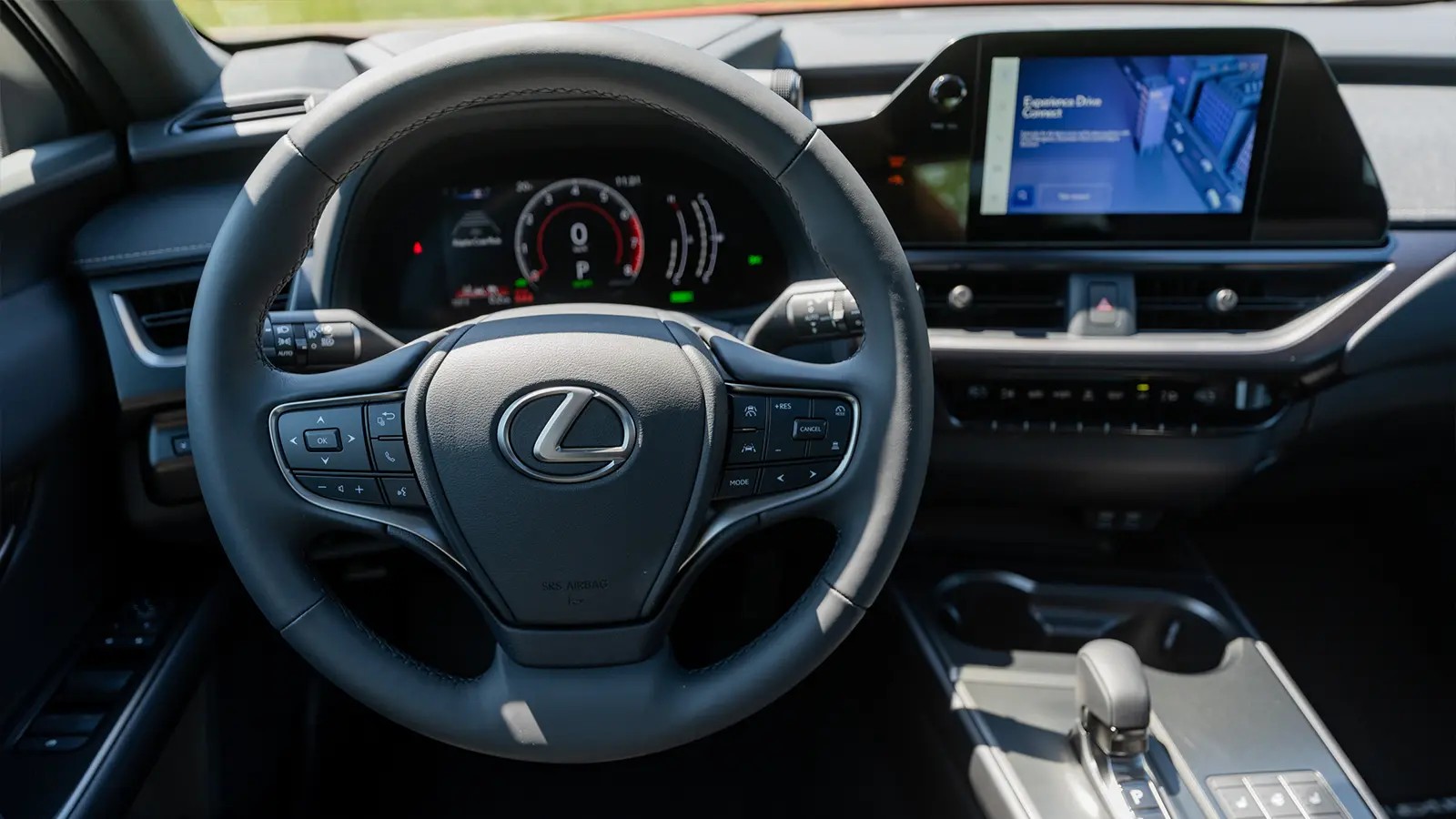 Lexus UX 300h interior featuring luxurious materials and digital displays
Lexus UX 300h interior featuring luxurious materials and digital displays
The interior of the UX 300h impresses with its material quality, design, and driver comfort, especially for those under six feet tall. However, rear passenger and cargo space are limited due to its smaller dimensions. The cargo area offers just 17.2 cubic feet, significantly less than the Tucson and CX-50.
While the gauges in the UX 300h feel somewhat dated, a color head-up display is a notable feature. A larger 12.3-inch infotainment screen is now available on most trims, modernizing the interior, though the abundance of physical buttons reflects a pre-dominantly digital design era. This might be appealing to drivers who prefer tactile controls.
Significant updates have been made to the UX 300h’s powertrain. The CVT is now a shift-by-wire system, and the UX is the first Lexus hybrid to adopt a lithium-ion battery, replacing the nickel-metal hydride batteries used in many Toyota hybrids. Power output has increased to 196 horsepower, and all-wheel-drive models achieve 42 mpg combined, closely matching the front-wheel-drive model’s 43 mpg. However, the engine noise remains a point of contention, being louder and less refined than expected in a Lexus, although the larger battery helps mitigate this to some extent.
The Lexus UX 300h’s primary advantage lies in its price. Starting at $37,515 for the front-wheel-drive model and $43,035 for the F Sport AWD version, it offers a relatively accessible entry into the luxury hybrid SUV segment. While interior space is compromised, the UX 300h provides a sophisticated and fuel-efficient urban vehicle with upscale materials and design.
Conclusion: Choosing the Best Compact Hybrid SUV
Each of these compact hybrid SUVs presents a unique blend of strengths and weaknesses. However, the Hyundai Tucson Hybrid emerges as a standout choice in this comparison. It delivers a compelling combination of practicality, sporty appeal (especially in the N Line trim), and modern design, both inside and out. The Tucson Hybrid offers a well-rounded package that is likely to remain stylish and relevant for years to come, even as the automotive landscape shifts increasingly towards full electrification. Its versatility and overall appeal make it a strong contender for the title of the best hybrid SUV in this competitive segment.
*All mileage claims are EPA estimated.
